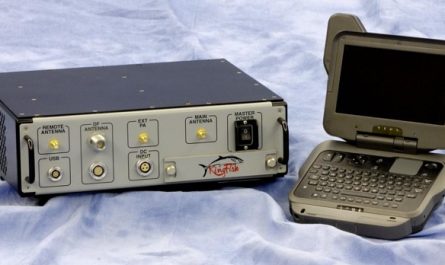 Unmanned aerial vehicles or drones have conventionally been used by the military for surveillance and combat operations. However, in recent years drones have found a new purpose – delivery of packages. As online shopping gains prominence and customers demand faster delivery times, companies are looking at drones as a viable option to fulfill the last mile of delivery. In this article, we discuss the growing adoption of delivery drones and the opportunities as well as challenges that lie ahead.
Unmanned aerial vehicles or drones have conventionally been used by the military for surveillance and combat operations. However, in recent years drones have found a new purpose – delivery of packages. As online shopping gains prominence and customers demand faster delivery times, companies are looking at drones as a viable option to fulfill the last mile of delivery. In this article, we discuss the growing adoption of delivery drones and the opportunities as well as challenges that lie ahead.
Early Experiments and Regulatory Hurdles
Delivery drones Some of the early experiments with delivery drones were conducted by companies like Amazon, Google and DHL around 2013-2014. However, the fledgling technology faced significant regulatory roadblocks. Most countries did not have proper regulations in place to allow commercial drone operations, especially over populated areas. Safety was a major concern as drones operating autonomously carry the risk of crashes. It took time for governments and aviation regulatory bodies to frame comprehensive rules and guidelines for drone delivery operations.
Gradual Easing of Regulations
Over the last few years, we have seen a gradual easing of regulations globally. Countries like the US, UK, Australia and several European nations have put in place regulatory ‘sandboxes’ wherein companies can trial limited delivery drone operations after securing approvals. Comprehensive rules on piloting licenses, flight paths, payloads, geo-fencing etc. have provided the much-needed framework. The COVID-19 pandemic also led many countries to fast-track regulatory approvals to enable contactless delivery via drones. This has given a major push to commercial delivery drones programs around the world.
Launch of Large-scale Pilot Projects
Emboldened by the evolving regulatory environment, companies have embarked on several large-scale pilot projects over the last 2-3 years. Amazon has conducted hundreds of test flights in the US and UK to deliver packages weighing less than 5 pounds to customers within 30 minutes. In Asia, e-commerce giant JD.com successfully carried out many drone deliveries to remote villages in China during the pandemic. Google’s Wing service completed over 1,00,000 drone deliveries of medical supplies, foods and other essentials in Australia and Finland. Similar pilots have also been conducted by Zipline in Africa and Starship Technologies in Europe. The pilots have demonstrated the technical and operational feasibility of drone delivery at scale.
Business Models and Use Cases
With proven technology and success of initial pilots, companies are now looking at viable business models around delivery drones. The most common use cases include delivering emergency medicines and defibrillators to remote areas, transporting blood and lab samples between healthcare facilities, restaurant meal and grocery deliveries within cities and delivering packages to customers’ doorsteps. Autonomous drones have an advantage over ground vehicles in terms of adding new capacities for ‘last mile’ delivery without increasing road congestion. Industries like e-commerce, QSR chains, pharmaceuticals and logistics are evaluating incorporating drones into their delivery infrastructure to enhance reach and experience.
Challenges Remain
Despite the progress, drone deliveries are yet to become mainstream and few commercial models have scaled globally. There are still many challenges that need to be solved prior to mass adoption. Battery life remains limited and restricts per-flight payloads as well as ranges. More effort is required in autonomous navigation capabilities to ensure safety, especially in densely populated urban areas. Inclement weather conditions like heavy rains or strong winds pose difficulties for outdoor drone flights. Infrastructure such as dedicated landing pads and charging stations need to be established systematically. Public acceptance is also a hurdle as privacy and noise concerns linger with unmanned aerial vehicles hovering over residential areas.
Regulators too are cautious about safety risks and prefer measured expansion. Strict rules apply on activities like flying drones over people or at night. Companies need to clearly demonstrate redundancies and fail-safes to address issues like hardware malfunctions or losing control connectivity during flights. Cybersecurity of onboard systems and payloads are another area of concern that require mitigation. High costs of drone hardware and operations are also proving unviable for many smaller packages currently.
The Road Ahead
Despite obstacles, most industry analysts estimate that the commercial drone delivery market will see exponential growth over the next 5-10 years. Advancements in battery technology, computational power and materials are expected to enhance drone capabilities and drive down costs significantly. More nations will ease regulations as experience from pilots pile up. Self-flying drones for last-mile delivery holds the promise of revolutionizing logistics and reaching the most remote areas. While it may still be a few years before drones become the predominant method of transporting packages, their usage will certainly increase multifold driven by customer needs for speed, convenience and connectivity. The technology also has applications beyond deliveries in areas such as infrastructure inspection, surveillance and emergency response. Overall, the unmanned aerial revolution has taken roots and delivery drones appear poised for widespread adoption sooner than later.
In conclusion, Delivery drones represent a promising solution for fast and flexible last-mile delivery. While initial testing has demonstrated their viability, extensive work lies ahead to enable mass deployment. Regulations and technology will need to advance hand-in-hand with increasing public acceptance to scale this new air transport system for timely deliveries. Over the next decade, drones can redefine logistical efficiencies if challenges around safety, costs and infrastructure can be adequately overcome.
1. Source: Coherent Market Insights, Public sources, Desk research
2. We have leveraged AI tools to mine information and compile it



